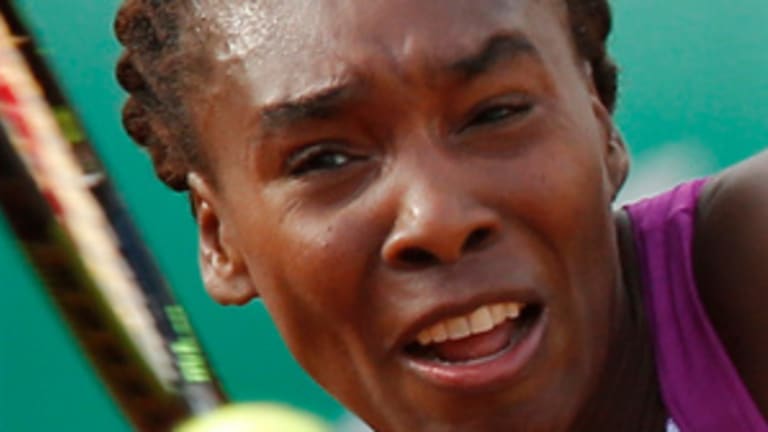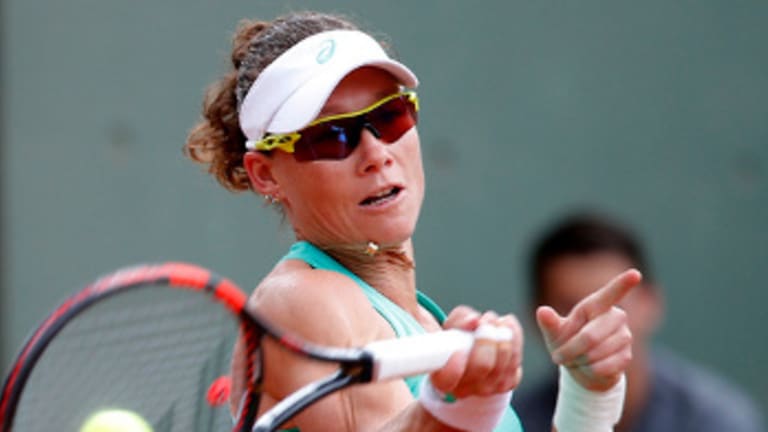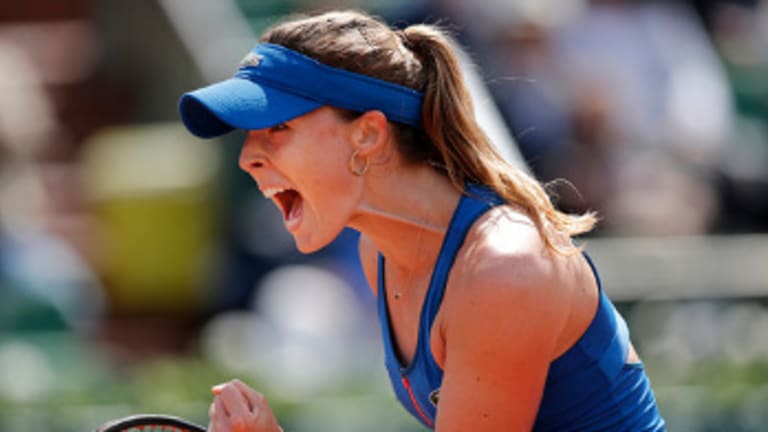Frances Tiafoe steps into the court and takes his racquet back to hit a forehand. He has what’s known as a busy swing. Very busy. It’s long enough, and his wrist is loose enough, that he can flick the frame back and forth a few times as he brings it around. His racquet seems to do dipsy-doodles in the air on its way to hitting the ball.
This technique is usually considered less than ideal. The more elements there are to a stroke, the more things there are that can go wrong with it. Yet Tiafoe hasn’t had much go wrong on a tennis court so far in his life. Two years ago, at age 15, the Maryland native became the youngest boy ever to win the Orange Bowl. The following year, he became the first player since John McEnroe in 1976 to win the Easter Bowl in back-to-back seasons. This year, at 17, Tiafoe turned pro, signed with Jay-Z’s management company, Roc-Nation Sport, began working with the USTA’s top coach, Jose Higueras, and, on Monday, made his Grand Slam debut at the French Open. A lot of people believe in Tiafoe, and a lot more people want to believe in him.
Should they believe? You couldn’t learn anything definitive from his brisk, 6-2, 6-1, 6-4 dismissal at the hands of Martin Klizan today. The Slovakian is currently ranked 251 spots ahead of the American, and there seemed to be about that many levels between their games. Tiafoe went down a break early in each of the first two sets; in the third, he went up 3-0 before losing six of the next seven games. He struggled to win second-serve points, tried to go down the line when he should have gone crosscourt, and always seemed to guess the wrong way on Klizan’s serve.
Asked what he learned from the loss, Tiafoe said with a smile, “I need to get a lot better.”
On the plus side, Tiafoe showed that he can stay with the pros physically. He’s 6’2”, very athletic and light on his feet, and his shots sound like professional shots—they pop when they leave the strings. He can also hit with easy power on his serve.
On the minus side, there’s that long, flicky forehand. Klizan was able to rush him on that side, but even when Tiafoe had time to set up, he sent a fair number of balls 10 feet over the baseline. Higueras is obviously an accomplished coach, but I’d guess Tiafoe will need a technical specialist to help him iron out the wrinkles in his forehand and his similarly busy serve.
“Everything can get better,” Tiafoe said when asked what he can improve, before mentioning his serve and volleys in particular.
At 17, Tiafoe has time, but the supply isn’t endless. He’s just a year younger than Croatia’s Borna Coric, who played with veteran savvy, and without many technical hitches, in beating Sam Querrey in four sets on Monday.
What was best about Tiafoe’s day was what came afterward. He showed a lot of promising traits in the press room.
He was honest: “In juniors, like a lot of people were looking up to me last year when I was the No. 1 seed," Tiafoe said. "Now I’m looking up to everyone here. It’s was definitely a lot different. I’ve got to get used to it, I guess.”
He was analytical: “[Klizan is] pretty solid. Doesn’t give you too much. I mean, there is no like loose errors, pretty solid everywhere, moves well. Every time he has a chance to attack, he hurts you. Doesn’t let you get back on defense.”
And he had perspective: Asked to sum up his first Slam, Tiafoe said, “It was great. I had a blast. I didn’t play my best today.”



